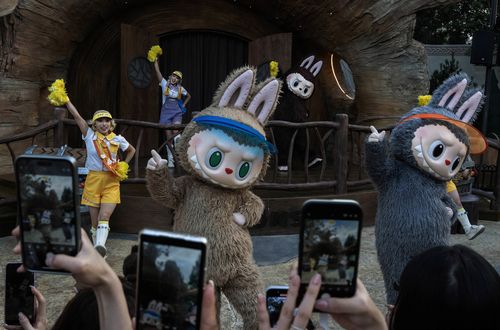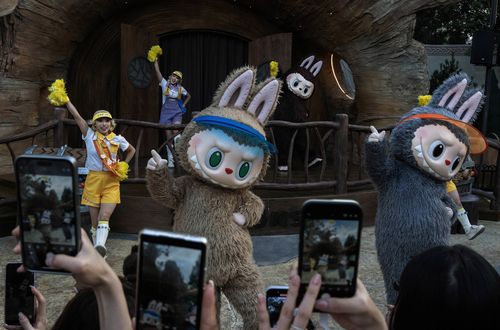Share this @internewscast.com
Like many Labubu fans, 28-year-old American Joselyn Chamorro is over the craze.
Waiting in overnight lines to purchase the $US30 ($46) mischievous dolls, or paying $US100 to resellers, has become less enticing. Therefore, when she saw a service station in Florida selling fake Labubus — called Lafufus — for $US20, she promptly decided to buy one.
Trying to get a real Labubu, “it’s almost like The Hunger Games,” Chamorro said.

It also doesn’t rank too highly in the US Chamber IP index, which measures the strength of intellectual property among different nations.
Pop Mart Americas recently took legal action against a group of 7-Eleven stores in California for selling counterfeit Labubus. Zhang indicated that more companies might face lawsuits from Pop Mart over the sale of Lafufus. However, the presence of counterfeits might decrease as Pop Mart increases its production efforts.
A consumer standards body in the UK has warned that fake Labubu dolls could present a choking hazard to young children. Similarly, the US Consumer Product Safety Commission issued a warning, noting that a genuine Labubu has a holographic Pop Mart sticker, a scannable QR code linking to the official Pop Mart website, and exactly nine teeth; newer Labubus will also feature “a subtle UV stamp on one foot.”
What’s driving demand for Labubus?
These days, you may see more Lafufus on the streets than Labubus, especially as social media has destigmatised the shame of owning knock-off toys.
Lafufus are “a lot more unique looking, with little mess-ups and quirks that people enjoy,” said Cassandra Harrison, a 32-year-old from New Jersey, to CNN.
Many of her friends are beginning to collect Lafufus, and she recently discovered a wall of them at a phone repair store inside her local Super Walmart. However, ultimately, Harrison also purchased a real Labubu.
Turning Labubu, originally a storybook character, into a popular plush wasn’t merely an accident, according to Mark Tanner, managing director of the consumer insights newsletter China Skinny. He explained to CNN that more Chinese companies are surpassing Western competitors with rapid product development.
Pop Mart did a lot of work behind the scenes to make the “blind box” approach work. Like most consumer trends today, the blind boxes appeal to shoppers who are scrolling through hyper-specific TikTok algorithms.
“(Pop Mart’s strategy) just aligns really well with the way people are consuming information right now, where the algorithm does all the work for them. When you buy a Labubu, you’re not having to make any choices,” Tanner said.
Pop Mart also doesn’t have the decades-long history as some of its Western competitors. So the company isn’t as concerned about retaining loyal customers — it’s still busy building its base.
Pop Mart has opened at least 50 stores this year around the world, Morningstar said. Morningstar analysts estimate that business outside China will account for 70 per cent of Pop Mart’s revenue in 2034, compared with 39 per cent in 2024.












